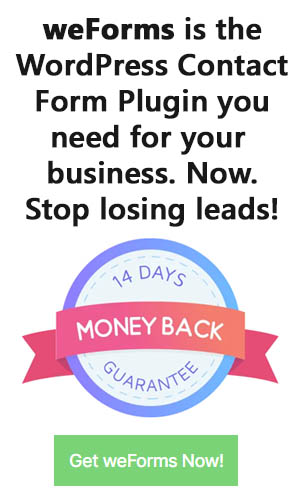Zapier is a web automation app. It automates tasks between web apps. With Zapier, integrate your web apps and pass data between apps to get more done efficiently. Zapier is another module you can use with weForms.
How weForms works with Zapier
With the weForms plugin and a Zapier account, you can send data from weForms to 300+ web apps. The possibilities of what you can do are almost endless. Here are some examples:
- Send form data to Google Sheets
- Send text messages
- Get Slack notifications
Prerequisites
- First, you have to send an invitation to Zapier, it is mandatory.
- Activate Zapier Module
- Make sure you have a Zapier account (the basic version is free).
Activate Zapier Module
The Zapier module needs to be activated to see the features mentioned in this documentation. To activate the Zapier module, navigate to wp-admin > weForms > Modules, now find and activate the Zapier Integration module using the Enable button.

Create New Form to Activate Zapier
In order to activate Zapier, you are required to create the form for which you want to activate the Zapier for. To create a new form simply get to wp-admin > weForms > All Forms. Click on Add Form button, add some fields to that blank form and save it in the form editor as shown below.

Once you created your desired form, now get to ‘Integrations’ tab to toggle on the Zapier from the listed available integrations

Setting up Zapier with weForms App
Once the form has been created, now to make the integration of weForms-Zapier work, you will require to set up the weForms account and add an action step in Zapier. For that, you will need to tailgate the following steps.
Step 1: Login to the Zapier account and click on ‘Make a Zap‘ located at the top right corner.

Step 2: Choose weForms as the trigger app.

Choose New Form Submission as the trigger event. Hit continue.

Step 3: You will get a Webhook URL. Copy it.

Step 4: Paste the Webhook URL onto to your form. Go to Forms→integrations→Zapier→Settings and paste it.

Step 5: Go back to your Zapier setup and choose the app and event you want your form to connect with.

Step 6: Select whether you want to create a folder or upload a file or anything else.

Step 7: Add your email address.

Step 8: Customize your uploaded file and hit continue.

Then you will get a message that is your ZAP is ready. Turn ZAP on.

Step 9: Submit the form from the frontend

Step 10: Your file will be uploaded to your drive under the file name you created.

You will see the text written in the file is same as you have written in the frontend form.

Final Step: Connect Applications & Send Form Data
To send your form data to Zapier integrated applications (e.g: Google docs, Slack), you have to connect your created Zap to those external applications. During the connection process, you have to configure your form fields with the destination application properly. So that your connected application recognize the form fields and send data properly.
In this video tutorial, you will get an example of how to connect Zap with Google docs and configure the form fields.
Like the example given in the video, you can connect more applications with a single Zap. As we have already added Zap’s webhook URL in a contact form of weForms the form data will be sent to your Zap’s connected applications, no matter how many applications are connected with a single Zap.
